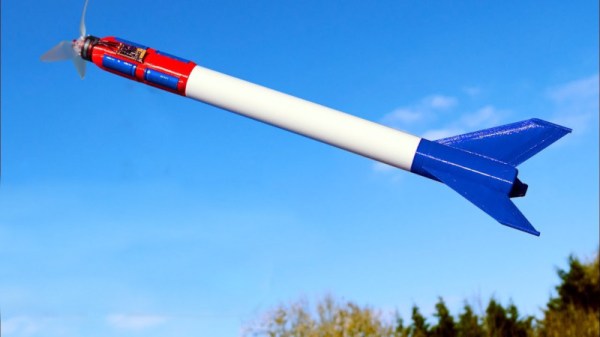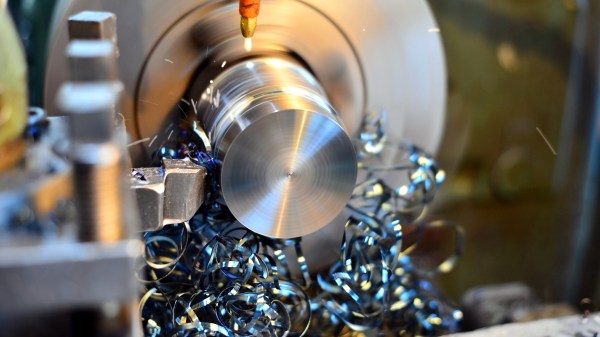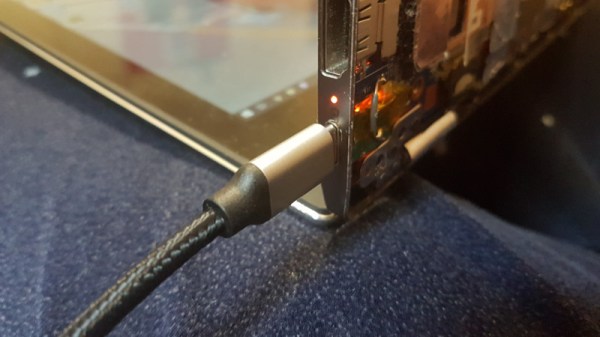OK, so this isn’t really a rocket. In the strictest definition, rockets are vehicles or projectiles that propel themselves through jettisoning mass, usually through the combustion of fuel. But with electric motors getting stronger and stronger, folks are building craft that look a lot more like rockets than airplanes. [Tom Stanton] is one such person (Youtube link, embedded below).
We’ve seen “electric rocket” builds before, but where others have used lithium batteries, [Tom] has used supercapacitors instead. Six supercaps are installed in a 3D printed mount, and supply power to a 500 W brushless outrunner motor which gives the rocket the thrust to climb into the sky.
In testing, [Tom] estimates the rocket was able to reach an altitude of approximately 60 m, or 200 ft. That’s not particularly astounding, but it does prove that supercaps can run a high current load in a real world situation. Additionally, their fast recharge rate allows [Tom] to make a repeat flights in just about the time it takes to repack the parachute. Video after the break.
Continue reading “Supercapacitors Propel Rocket To The Skies”














